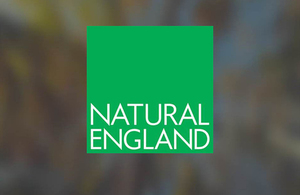Buzzard licensing applications
Natural England recently issued a licence permitting the control of up to 10 buzzards to prevent serious damage to young pheasants.

Natural England is committed to being as open and transparent about its licensing decisions as it can be and the documents relating to that decision are published below. Certain information has to be withheld in accordance with our legal obligations under the Environmental Information Regulations 2004.
Where appropriate applications are made, Natural England issues wildlife licences to prevent damage to agriculture, livestock and fisheries. So far this year, we have received over 5,500 applications, covering a variety of species and purposes.
In deciding whether a licence should be granted, all applications have to be assessed in the same way against the evidence, relevant policy and guidance - and within the legal framework of the Wildlife and Countryside Act 1981. When, and only when, all the relevant criteria are met, Natural England is legally obliged to issue a licence.
Specifically regarding the control of buzzards, the High Court recently considered the issues surrounding the granting of a licence in order to protect livestock - and gave clear legal direction on that decision making process. This includes the need to balance the protection of wild birds against the requirement to prevent serious damage to livestock and the need to adopt a consistent approach to the interpretation of policy. Natural England revised its guidance to take account of the High Court ruling – and consulted stakeholders on the revised guidance at the time.
The Wildlife and Countryside Act 1981 defines livestock as any animal which is “kept for the provision or improvement of shooting or fishing”. The guidance says that where birds are either in pens or are significantly dependent on people they are classed as livestock.
Natural England is currently considering 4 further applications for a licence to control buzzards to prevent damage to livestock. Overall, the number of applications for buzzard control licences is in keeping with recent previous years. Each application will be assessed within the framework described above. When a decision has been reached on all of the applications we’ll provide a further public update.
One further application has been withdrawn by the applicant as they wish to further explore alternative methods to resolve the issue. Full exploration of alternative methods is a key test in our consideration of licence applications.
We would not consider licensing any activity which would adversely affect the conservation status of a species. It is illegal to kill wild birds without a licence from Natural England and anyone who suspects a wildlife crime should report details to the Police.
All documents attached to this news story were current at the time of decision making and were only published in that context.
Supporting documents for active buzzard licence:
Update 17 November
Natural England received a total of 6 applications to control buzzards to prevent serious damage to livestock during the summer and autumn of 2016.
Four of the applications resulted in licences being issued. The details of the further 3 licences are below.
The total number of buzzards licenced for control was for up to 26 buzzards. All licences have now expired and the total number of buzzards controlled was 11.
The other 2 applications were withdrawn by the applicants as they wished to further explore alternative methods to resolve the issues. This is a key licensing test that we apply to all applications.
As outlined above, all licence applications are assessed in the same way against the evidence, relevant policy and guidance - and within the legal framework of the Wildlife and Countryside Act 1981. When all the relevant criteria are met, Natural England is legally obliged to issue a licence.
8 September 2016
26 September 2016
29 September 2016
Updates to this page
-
Update 17 November with details of further 3 licences.
-
First published.